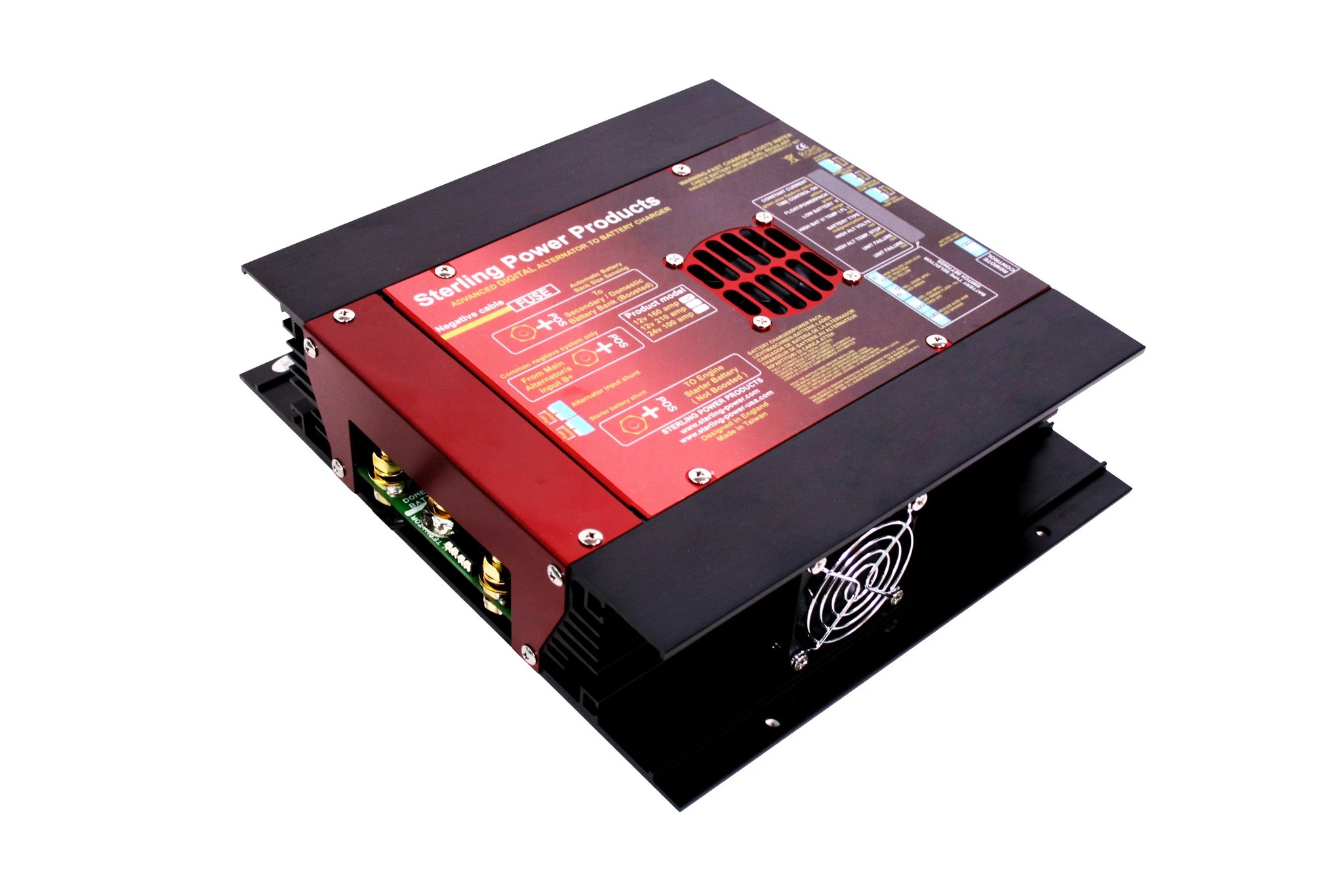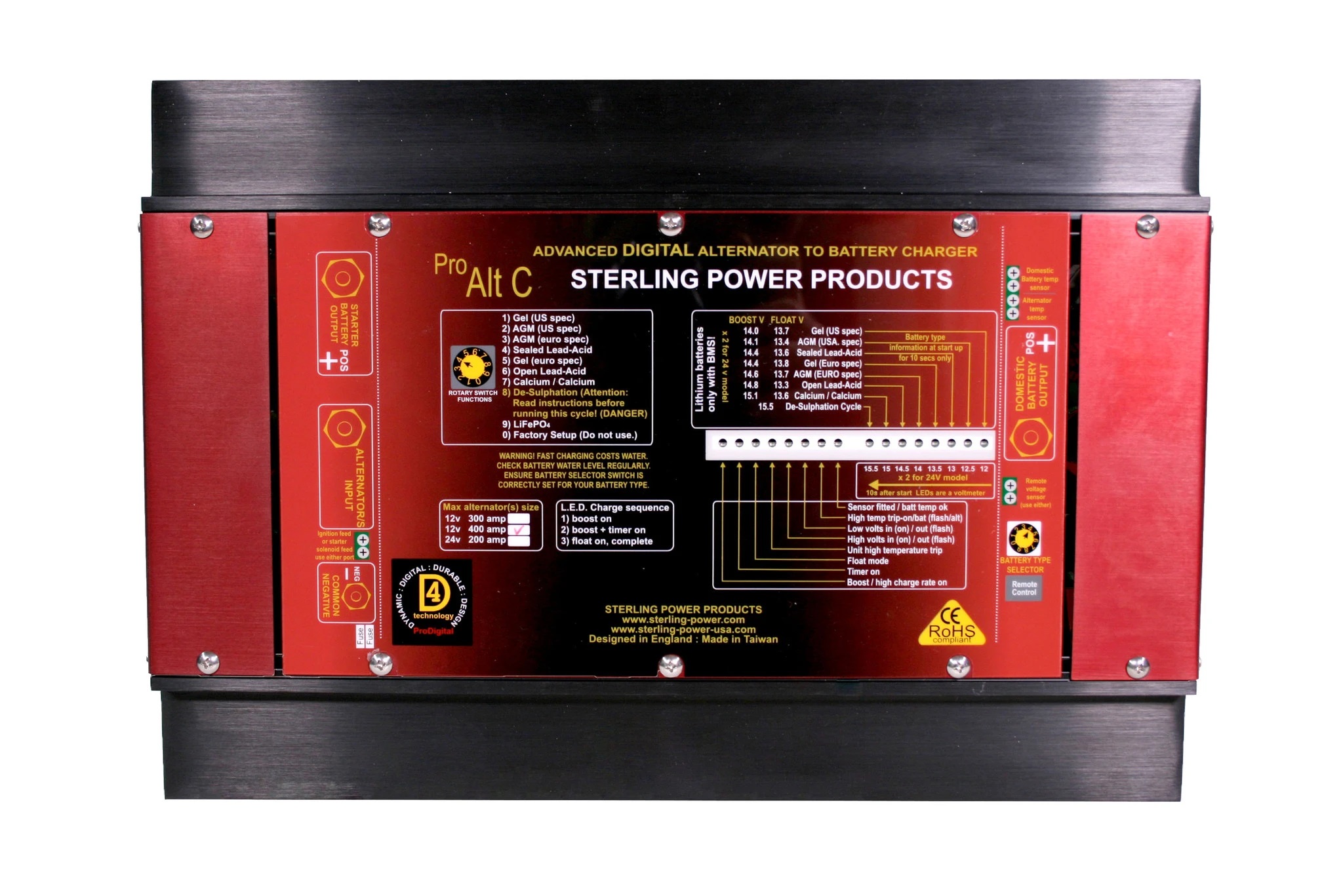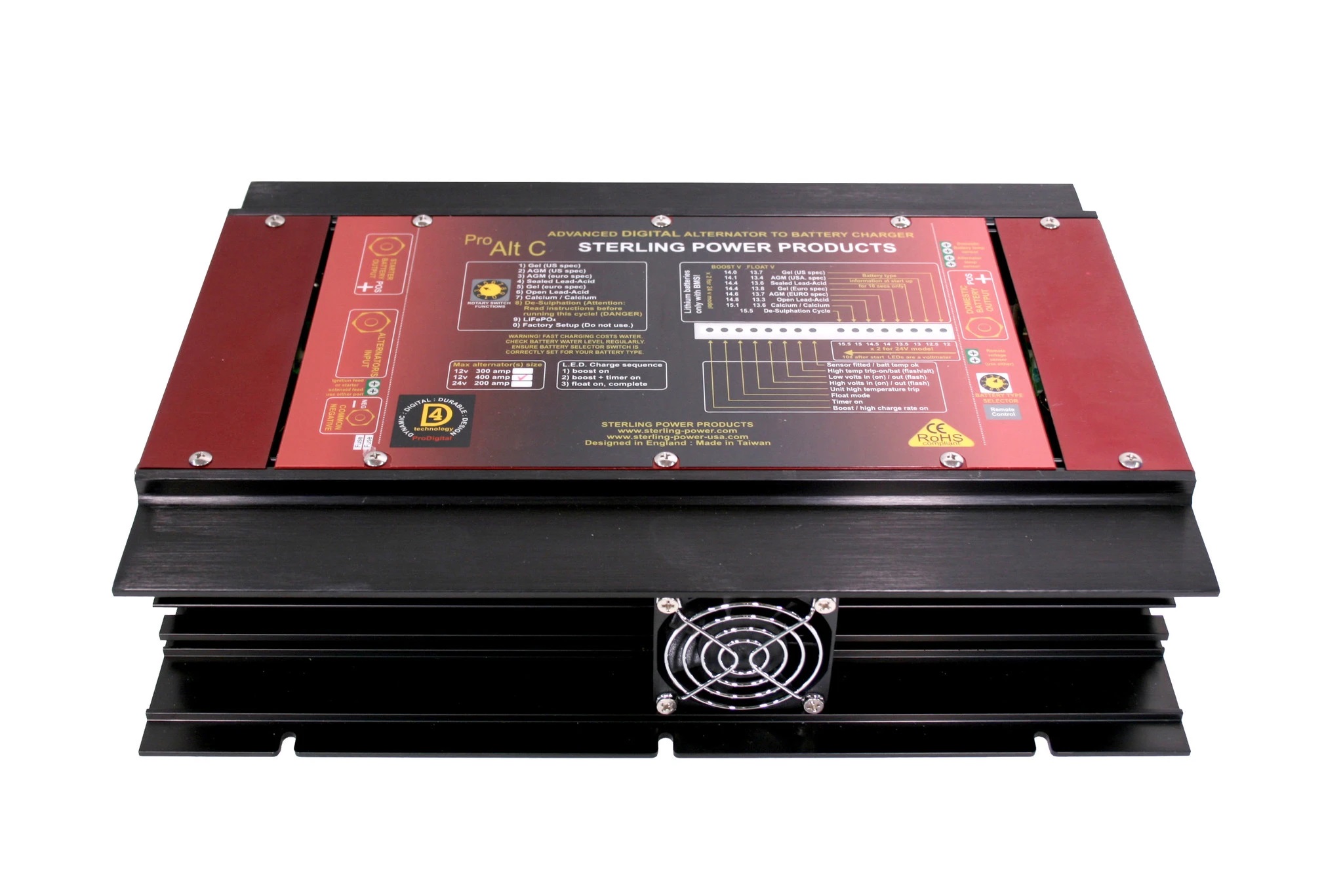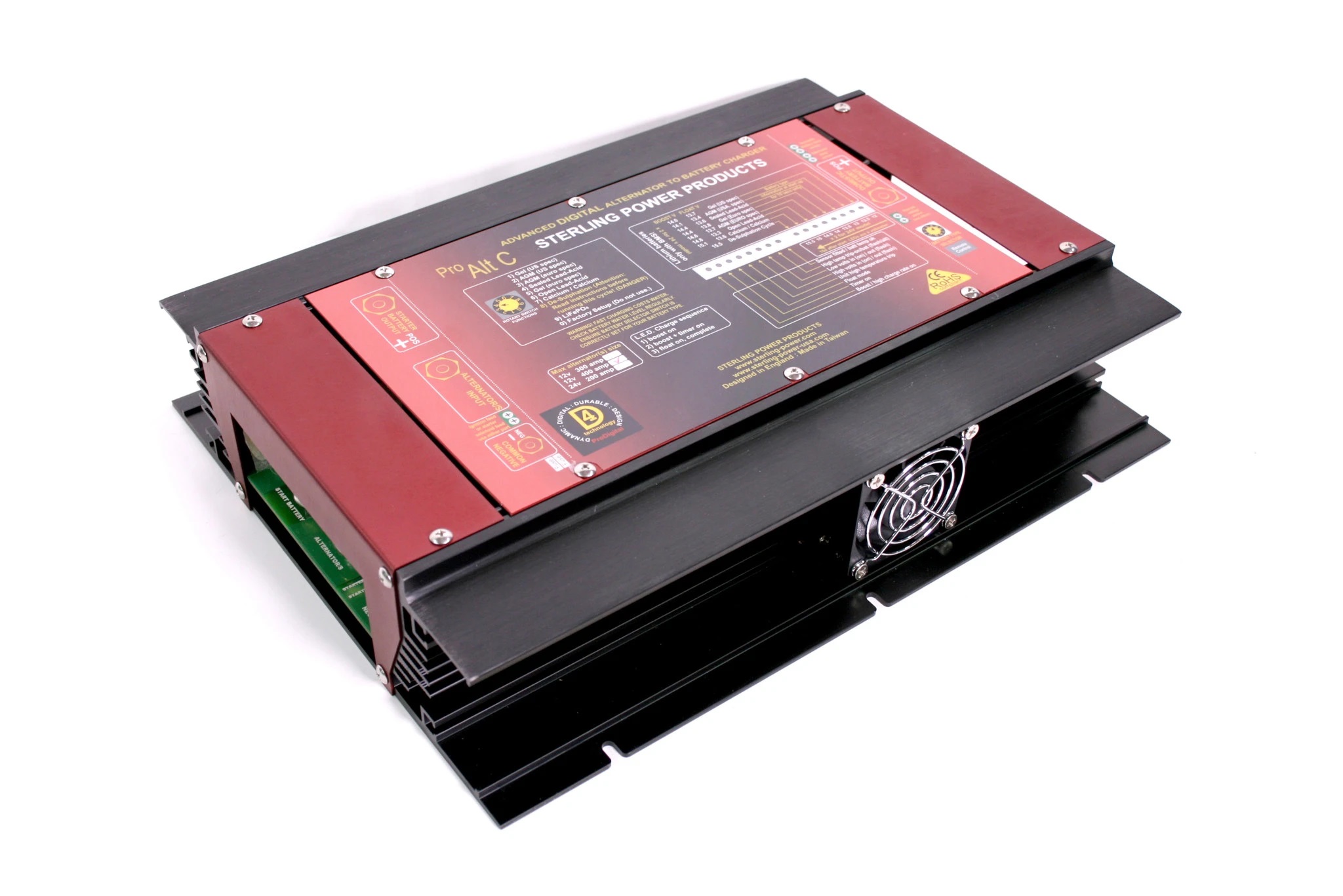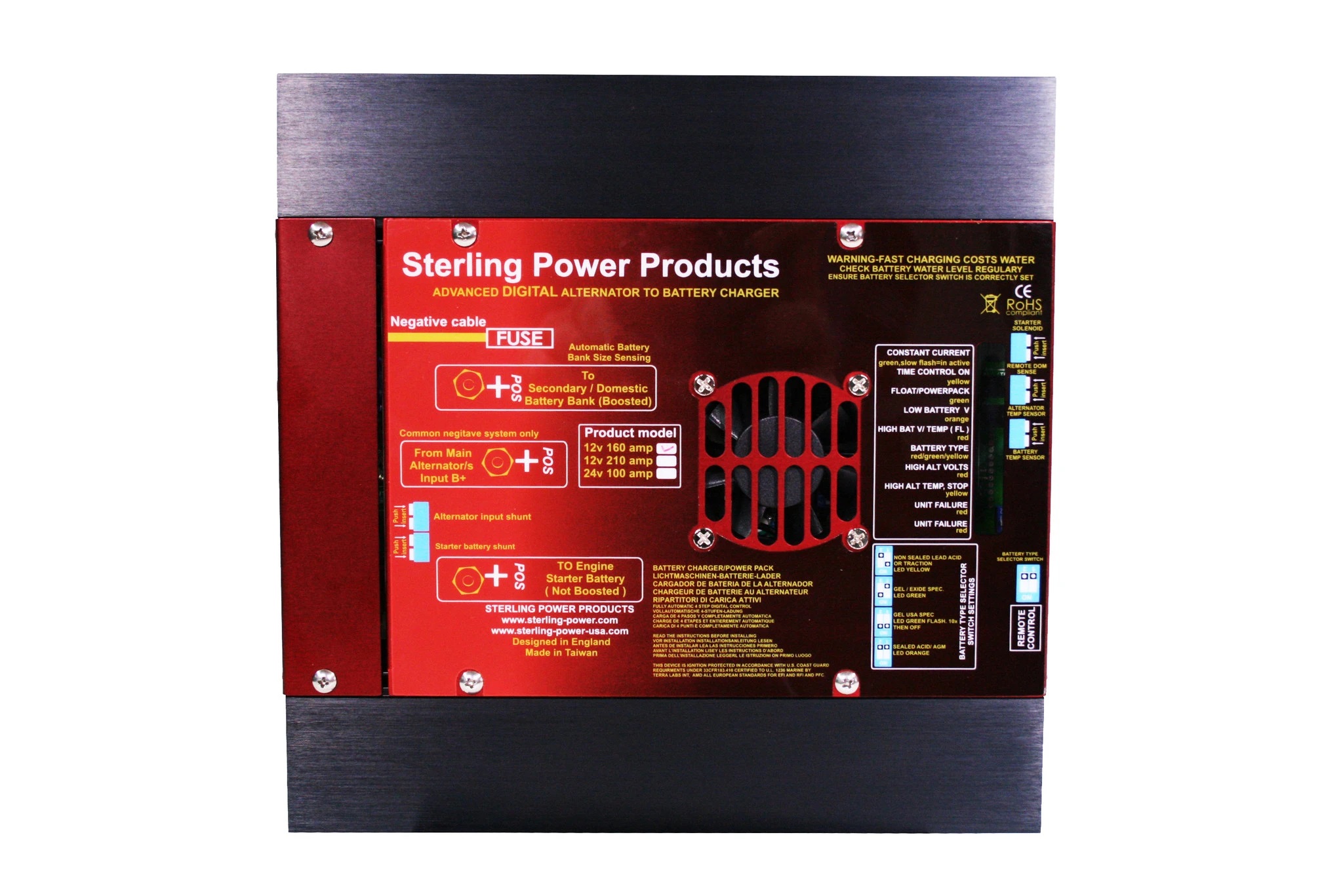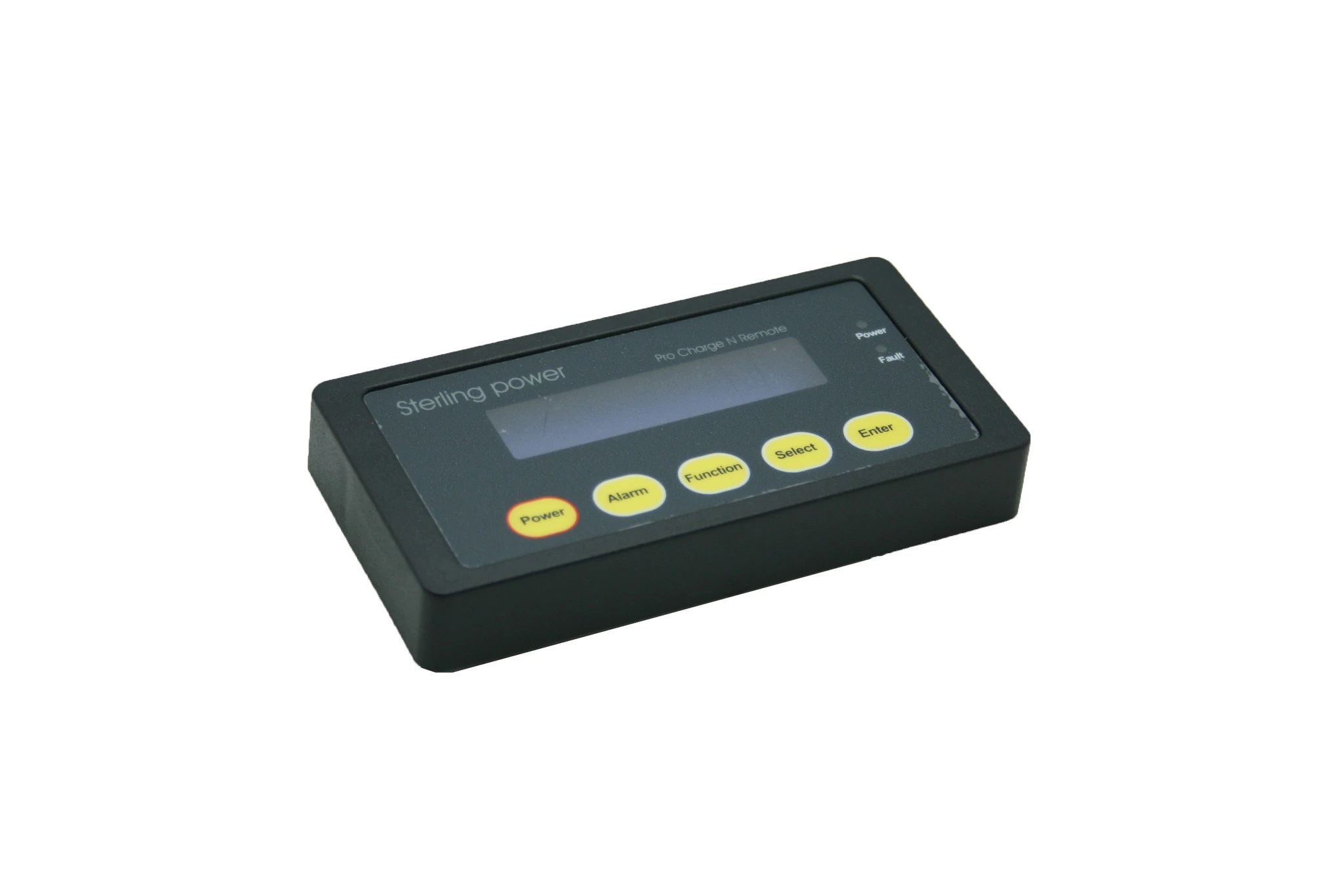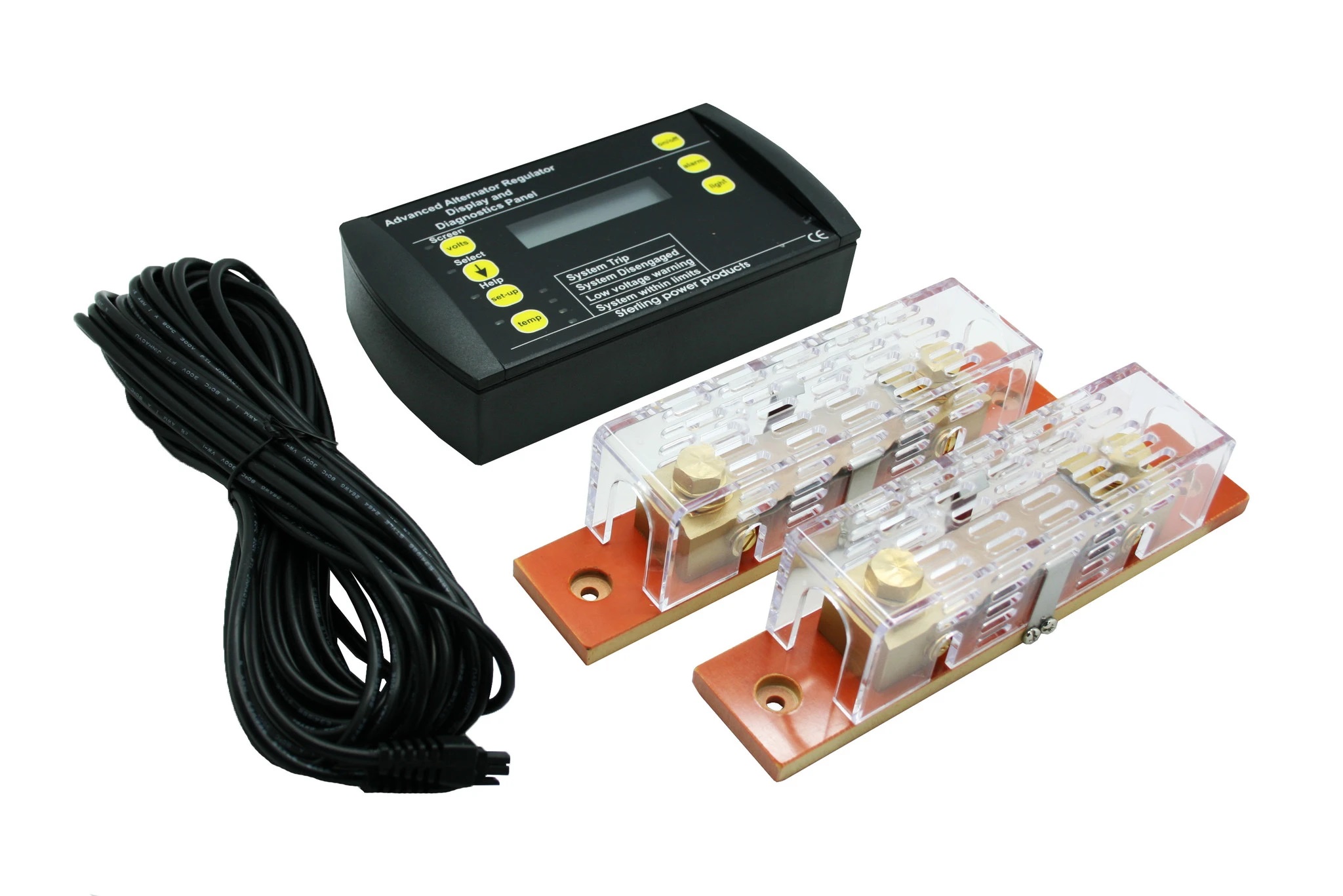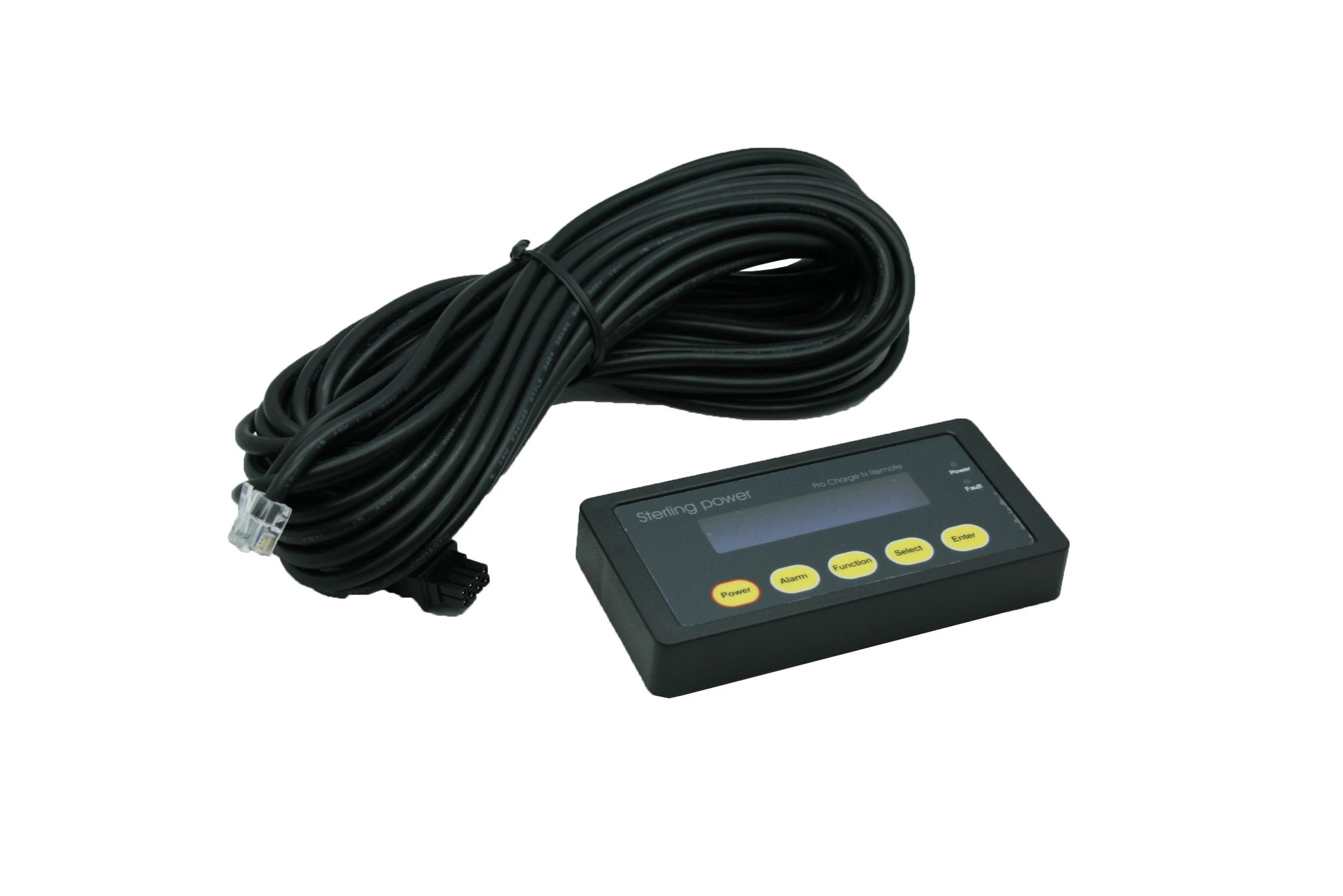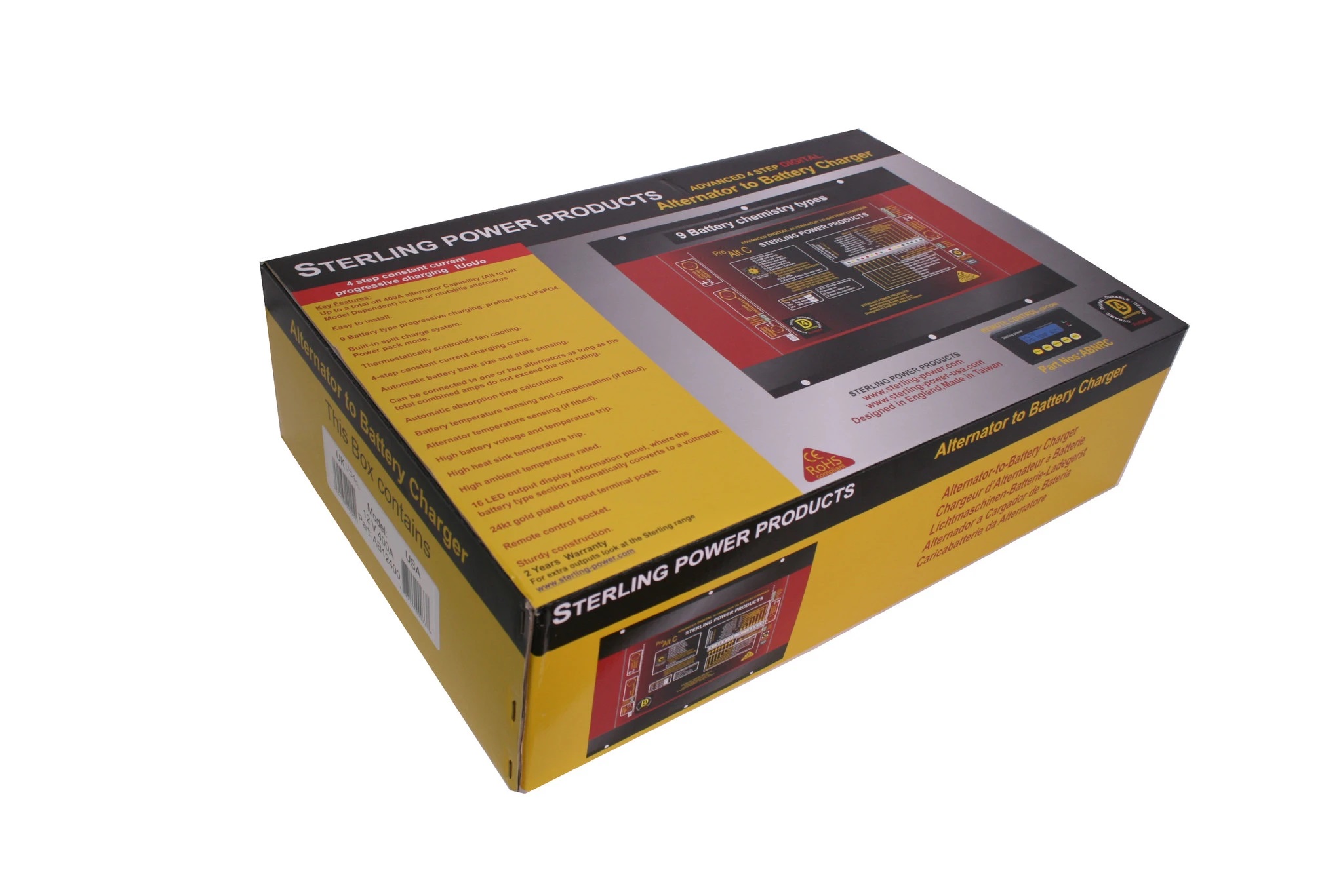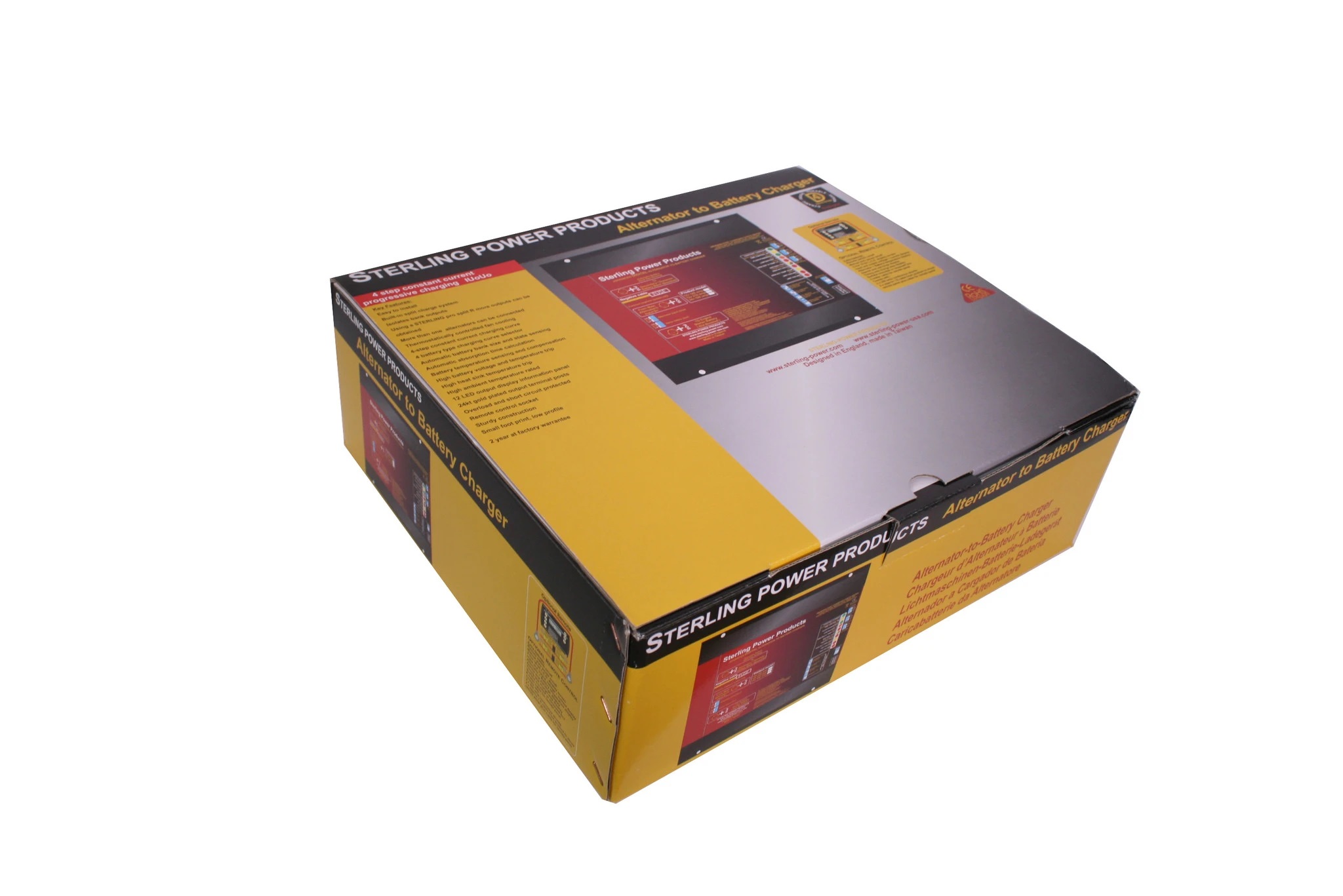Alternator to Battery Chargers up to 400A
£148.00 – £899.00 (ex. VAT)
Description
Alternator to Battery Chargers
| DC Voltage | Max alt amps | Size L x W x D mm | Weight | Part Number |
| 12 | 300 | 370 x 288 x 70 | 5.0 | AB12300 |
| 12 | 400 | 370 x 288 x 70 | 5.1 | AB12400 |
| 24 | 200 | 370 x 288 x 70 | 5.2 | AB24200 |
| Remote Control | for above products | ABNRC |
Charge your batteries over 5 times faster, input 50% extra power plus de-sulphate the batteries and make them last longer.
Can be used with multiple alternators
| Available in: | 12V | 80A | 130A | 160A | 210A | 300A | 400A |
| 24V | 80A | 100A | 200A |
Matching your alternator system to the correct unit:
The altertanor to battery number refers to the maximum total amps the unit can be supplied with. Example: AB1280 is 80A (only alternator(s) of a total of 80A or lower can be used. 2 x 40A is fine).
This is a 100% unique product, not available anywhere else in the world. It is totally designed and conceived by Sterling. This is in order to overcome all problems experienced now and anticipated in the future with standard advanced alternator regulators. This following explanation is to help understand what it does and where it should be used. It should not in any way be taken to demean any of the other charging products we manufacture.
Please note: The alternator to battery charger is an easy way to add advanced charging to many engines. It is still very much suitable for most American Vehicles and most marine and other engines. But it is not suitable for modern vehicles / vans sold in Europe (Ford, VW, Merc, Renault, Citroen etc) and Japanese vehicles which have the new Euro Regenerative braking control systems fitted to the vehicle, for these vehicles you must use the Battery to Battery charger range of products. Look for the Regenerative Friendly Braking logo.
AB12160 – AB12210 – AB24100 Instructions
AB12300 – AB12400 – AB24200 Instructions
Advantages of the Alternator to battery charger over advanced regulators:
The main problems with all standard advanced regulators are:
1) Relatively difficult to install: This prevents semi skilled personnel from fitting .
2) Requires the removal of the existing alternator to work on it: This is not always easy to achieve and can add many hours of awkward work to an otherwise simple installation.
3) Requires extra cables to be run on the boat or vehicle: Again this can appear a simple thing, until a few hours work is required to pass a cable through a bulkhead.
4) Warranty on new engines: Some engine/vehicle dealers raise warranty issues if a new alternator is modified to fit an advanced regulator, with this product, the alt is not tampered with.
5) Total Package: 95% of marine installations using an advanced alternator regulator also have some sort of split charger system. This product already has this split charge system built in to it.
How do we do this
Well, in theory, it is very simple. With an advanced regulator which connects to the alternator’s regulator, we override the standard alternator regulator and we push the alternator’s voltage up to increase the voltage at the batteries. This results in a massive charge improvement at the batteries.
With the alternator to battery charger we do the reverse. We put a ” load” on the alternator to pull the alternator voltage down. This fools the alternator into thinking that there is a major drain on the system. As such the standard regulator works at full current. However, the voltage is pulled down to a totally useless voltage for charging batteries. So, the new system takes in this high current, but low voltage. It amplifies the voltage to charge the auxiliary battery bank at a much higher voltage than the base system voltage. In order to achieve the fast battery charging, the software control program and settings for this product are the same as for our digital battery chargers and our digital advanced alternator regulator.
When would I use an alternator to battery charger over an advanced alternator regulator?
1) If you are a boat builder or vehicle builder and labour costs are a critical issue. This unit wins hands down. It requires only one extra wire (a negative) to the unit, the other power cables will already be standard. The only wires required for this unit are the alternator in and domestic + engine battery out.
2) If you are worried about the time and effort that it takes to fit an advanced regulator, then this unit will win. If you already have a split charger diode installed then the fitting for this unit will be about 15 minutes.
3) If you have a voltage sensitive base platform (i.e. a car or van with an E.C.U. with Regenerative Braking system you must use our battery to battery chargers which are regenerative braking friendly)
4) If you have warranty issues with a new engine, then this unit has no warranty conflict.
5) If you are worried about finding a competent electrician abroad, or concerned about the fitting costs of an advanced regulator. Then this is the solution.
This new product incorporates a split charge system to charge 2 battery banks. However, on the domestic battery bank channel only, there is a unique voltage amplifier. This ensures the alternator works at its maximum output. (It could also be used on a single output battery charger or other current limited power source) and increases the voltage of the domestic line (with software digital control) up to 14.1V (for AGM) 14.4V (for GEL) and 14.8V for open lead acid / traction. The same advanced program is used in the very successful Digital Advanced Regulator. Both products ‘fail safe’, allowing the original regulator(s) to operate.
What other uses for this product?
This product could be used on any other product which has a current limit on it. For example, if you have an old fashioned constant voltage transformer based battery charger (or a constant current with low preset voltage controls and poor timer performance) which doesn’t work very well, then simply attach this to the output of the old battery charger, and you will have the latest digital controlled 4 step charger, with all the programs, remote control and split output of the latest chargers on the market. Plus, at least a performance increase of about 500% (charger must not exceed the current rating of the device purchased).
Extra Features built into the system for use if required:
1) Battery temperature sensing.
2) Alternator temperature sensing: This disengages the unit in the event of the alternator temperature getting too high, it then re-engages the unit when the alternator cools down.
3) Battery sensor: The system battery sensor is built into the unit and is connected to the battery out terminal. An extension cable can, however, be fitted to sense the voltage at the battery thus improving the performance slightly in the event of long cable runs.
4) Ignition start: Some alternators require a voltage on the alternator to start up. A split diode will prevent such an alternator from working. However, there is a built in device to overcome this problem in the event of such an alternator type being used.
5) The remote control: This offers full set-up information, plus voltages and temperatures of all the relevant places, as per the digital alternator regulator.
6) Current measurement: This unit, as standard, does not measure current. However, if the optional remote control is purchased it can measure the current to the domestic system (on both remote models). The remote on the 160-210A models can also measure the alternator and starter battery currents. It comes complete with 2 x pre-wired shunts that enable 2 currents to be monitored and the third current to be derived from the first two using the embedded software. The end package is a very simple and easy to install with all the performance and safety features of the most expensive Advanced Alternator Regulator, but with an extremely simple and convenient installation method.

